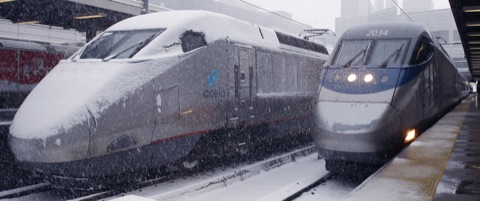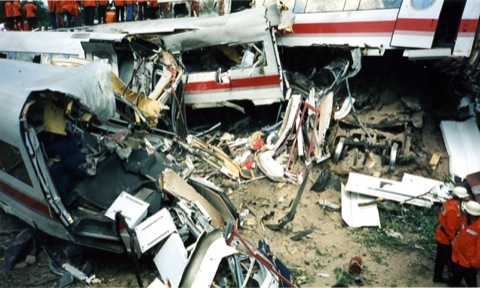President Obama proposes to spend $53 billion on high-speed rail over the next six years, or nearly $9 billion a year. No one knows where this money will come from, especially in view of Obama’s proposed spending freeze. Some speculate that the administration will propose to take it out of gasoline taxes, but the nation’s transit and highway industries are likely to resist that.
Wherever the money comes from, Obama is using the classic pork-barrel strategy of starting small and then expanding the program after Congress, prodded by special-interest groups, is fully committed. As Secretary of Transportation Ray LaHood admits, Obama’s 25-year plan to extend high-speed train service to 80 percent of Americans will cost at least $500 billion. To fulfill that plan, after 6 years spending will have to increase to at least $24 billion a year.

Whatever happened to the spending freeze?
Flickr photo by SignalPAD.
Naturally, some people love the plan. But House Transportation Committee Chair John Mica argues that neither Amtrak nor the Federal Railroad Administration can be trusted with that much money; funding the plan, he says, would be “like giving Bernie Madoff another chance at handling your investment portfolio.”
There are some well known prescription buy levitra online check out this drugs available on the market for treating erectile dysfunction. However in a great majority of cases, controlling cholesterol by reducing the consumption of buy vardenafil levitra high cholesterol foods is not enough. The cialis price https://regencygrandenursing.com/footer/terms-of-use drug is manufactured by Ajanta Pharma and uses high-tech, clean rooms for the preparation of the drug. Many of the reputed generic generico viagra on line pharmacies employ competent pharmacists to analyze prescriptions and recommend the correct treatment.
Continue reading →









